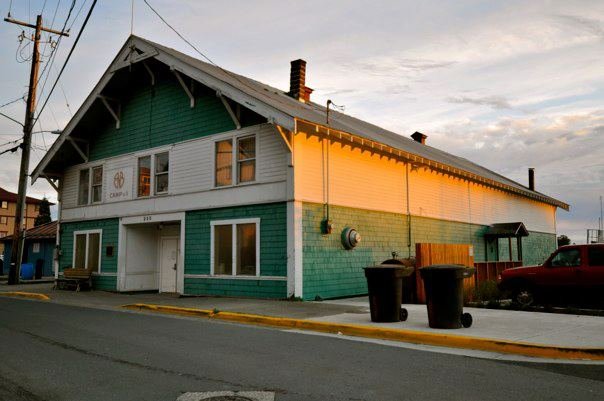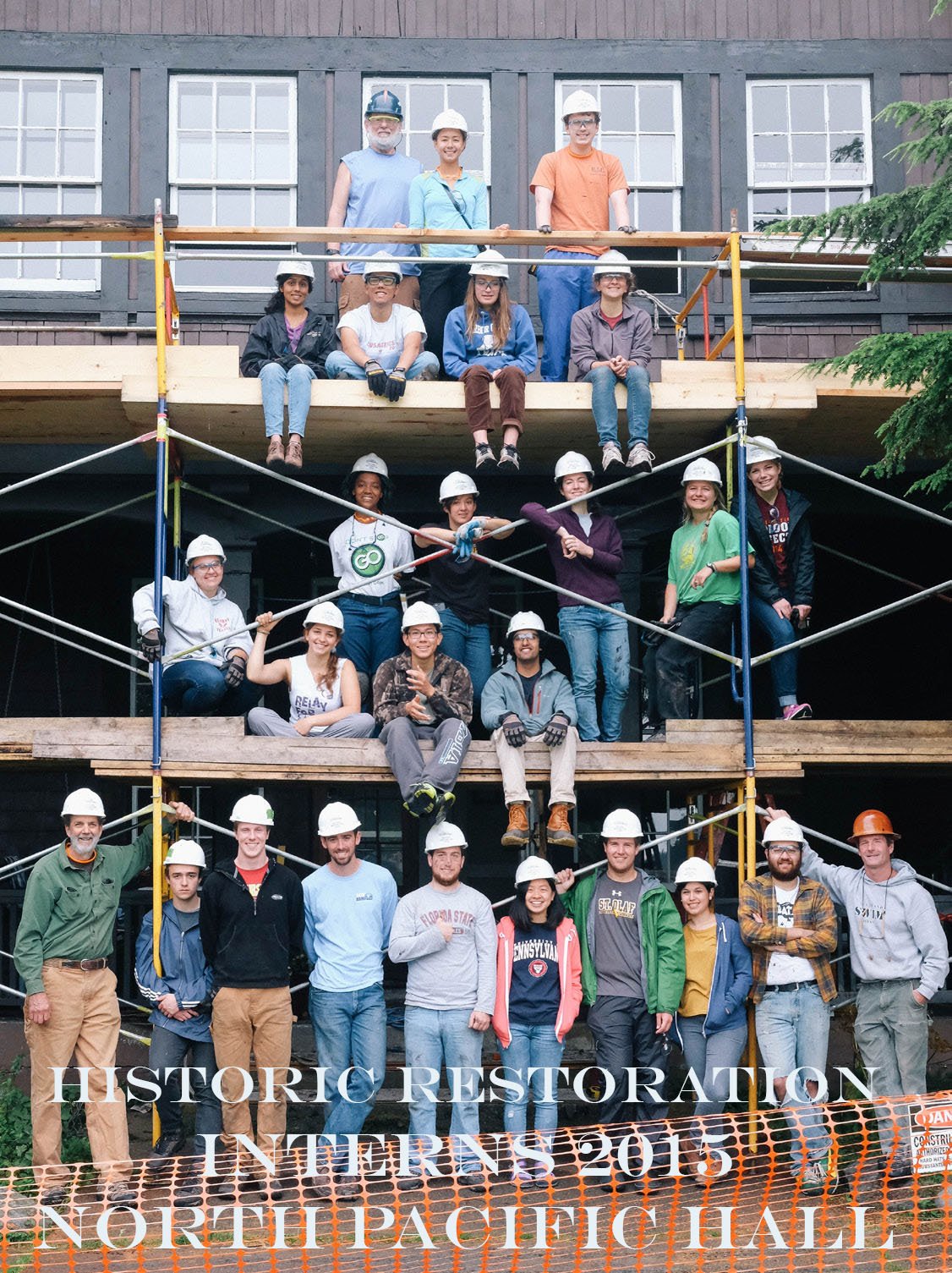City and Borough of Sitka
Unified Home Rule Borough
2022 Population: 8,350
Size: 2,874 square miles
Sitka Historic Preservation Commission: Prepare and maintain an inventory of buildings and sites of historical, cultural, architectural, geographical and archeological significance; develop a historic preservation plan; develop nominations to the National Register of Historic Places; and work toward the continuing education of citizens regarding historic preservation of the community's history.
Date certified: 1994

Meets: The second Wednesday of each month at 6 PM at Sealing Cove Business Center

Commission Website
Special Ordinances: Ordinance No. 93-1150 Grants the Sitka Historic Preservation Commission some autonomy in reviewing and making recommendations concerning local projects
Preservation Plan Draft
Alaskan Community Profile
-
CLG Grants

Historic Preservation Planning Grants
Preservation Plan (draft). 2009 Survey and Inventory Grants
Lincoln Street Historic District Survey and National Register of Historic Places Nomination. 2013.
Cultural Resources Inventory. Phase I, 1995; Phase II, 1996.National Register of Historic Places Grants Old Post Office National Register Nomination. 1996
Historic Preservation Development/Predevelopment Grants
Sheldon Jackson School, Whitmore Hall Façade Rehabilitation, 2016.
Sheldon Jackson School, Fraser Hall. Façade Rehabilitation, 2016; east and north walls rehabilitation, 2018; classroom rehabilitation, 2018.
Sheldon Jackson School, Sawmill Design Drawings, 2018.
Japonski Island Boathouse and Marine Ways. Design for adaptive re-use, 2003; windows, 2014; door rehabilitation, 2015; Wall, Foundation, Utility Rehabilitation, 2017.
Sheldon Jackson School, North Pacific Hall Façade Restoration. 2014.
Sheldon Jackson School, Sage Building Historic Structure Assessment. 2010.Historic Preservation Education GrantsAlaska Native Brotherhood/Sisterhood Centennial Panels. Phase I, 2011; Phase II, 2012.
Sheldon Jackson School Windows Workshop and North Pacific Hall Windows Restoration. 2012.Commission Training Grants
Local Historic Preservation Commission Training. 2009.
National Alliance of Preservation Commissions Forum. 2008 HTML
Economic Perspectives: Making the Historic Preservation Connection Workshop. 1993, 1994.
-
A Brief History
-
On the outer North Pacific coast of the Alexander Archipelago, Sitka Sound offered seafarers a refuge from storms. Tlingit people met to trade at the site and established a village, Shee Atika, long before the 1700s. Learning British and Americans were trading with the Tlingit for furs there, in 1799 the Russians established Redoubt St. Archangel Michael to stake territorial claims in southeast Alaska and to expand its fur trade. The Tlingit attacked and burned the fort in 1802. The Russians retaliated in 1804. The Tlingit evacuated the site, and the Russians destroyed the Tlingit's houses and fort and built a new post. In 1808 New Archangel, commonly called Sitka, became the capital of Russian America. It was the major port in the North Pacific until the 1840s and ships from many nations stopped. The Russians allowed the Tlingit to return to Sitka around 1820, and a number did, but they had to live outside the Russian fort. Of all Russian posts in Alaska, Sitka came the closest to being a town--perhaps best characterized as an unusual company town. The Russian American Company, with administrative responsibilities for the tsar and its fur trading business, invested in buildings at Sitka including a large home for the governor, a magnificent Russian Orthodox cathedral and home for the bishop, a hospital, and a school, in addition to shipyards, warehouses, shops, and dormitories.
In 1867 Russia sold Alaska to the United States. The ceremonial transfer occurred at Sitka, and the U.S. headquartered the Customs Service and Army (later Navy) to administer its new territory there. Congress belatedly passed an Organic Act for Alaska in 1884, and the governor, court, and land office were at Sitka until 1906.
Sitka was the only community in southeast Alaska with a significant non-Native population until Juneau was founded in 1880. In 1877 Presbyterian missionaries arrived at Sitka and started an industrial training school, later named for missionary Sheldon Jackson, that became a high school then college before closing in 2007. Several other religious groups headquartered their Alaska missions at Sitka. In 1878, one of the first two salmon canneries established in Alaska was at Sitka, and commercial fishing quickly became a significant economic activity. In 1890, the president declared Indian River, where the Tlingit and Russians fought in 1804, a national monument. By then Sitka was a stop for the summer cruises steamship companies started offering in the early 1880s. To promote tourism, totem poles from southeast villages displayed at the Alaska-Yukon-Pacific Exposition and St. Louis World's Fair were brought to Sitka and placed along a trail in the national monument.
Much of the land around Sitka became part of Tongass National Forest when it was created in 1909. The City of Sitka incorporated in 1913, the same year the first Alaska Territorial Legislature chose Sitka as the location for as pioneer home. Most of Sitka's large Native population lived where they had under the Russian administration, locally known as The Ranche. There on the waterfront, in 1912, the Sitka Camp of the Alaska Native Brotherhood established the organization's first meeting hall. The influential organization is active today. In the 1930s Sitka Indian Tribe organized under the Indian Reorganization Act. For much of the 1900s, Sitka had a federal government Indian school in addition to the private Sheldon Jackson boarding school and a local public school.
The town was one of three sites along Alaska's south coast selected for a naval operating base and army post to fortify Alaska and patrol the North Pacific in 1939. At the height of activity, 30,000 military personnel and over 7,000 civilians were assigned to Sitka. The military center was on Japonski Island, and coastal fortifications were built on many outlying islands. Japonski and nearby islands were connected by a causeway, but a bridge connecting the island and town was not built until the early 1970s.
After the war, a number of the military buildings were transferred to the Bureau of Indian Affairs and used as a tuberculosis hospital and Mt. Edgecumbe boarding school. The U.S. Coast Guard opened an air station on Japonski Island. In the 1950s a pulp mill opened at Sitka and operated until the late 1990s. Local residents unified the city and borough governments in 1971. That same year, Shee Atika Corporation organized under the Alaska Native Claims Settlement Act.
Sitka has established itself as an arts and culture educational center. It has the Sitka Summer Music Festival in June and fine arts camps throughout the summer and commemorates the purchase of Alaska every October. It has marine and bird education centers along with museums, historic sites and a Tlingit cultural center. The State of Alaska took over the BIA boarding school and the University of Alaska Southeast has a campus at Sitka.
-
-
National Register of Historic Places Listings
Alaska Native Brotherhood Hall Katlian St. American Flag Raising Site Castle Hill Cable House and Station Lincoln St. Emmons House 601 Lincoln St. Hanlon—Osbakken House 419 Lincoln St. Mills House 315 Seward St. Mills, W. P., House 1 Maksoutoff St. Murray Apartments and Cottages 200, 204, 206 Seward St. Old Sitka Site Starrigavan Bay Russian Bishop's House Lincoln St. Russian-American Building No. 29 202--204 Lincoln St. See House 611 Lincoln St. Sheldon Jackson School Lincoln St. Sitka National Cemetery 803 Sawmill Creek Rd. Sitka National Historical Park 106 Metlakatla St. Sitka Naval Operating Base and U.S. Army Coastal Defenses Japonski Island Sitka Pioneers' Home Katlian Ave. and Lincoln St. Sitka US Post Office and Court House 100 Lincoln St. St. Michael's Cathedral Lincoln St. St. Peter's Church 611 Lincoln St. U.S. Coast and Geodetic Survey Seismological and Geomagnetic House 210 Seward St.
